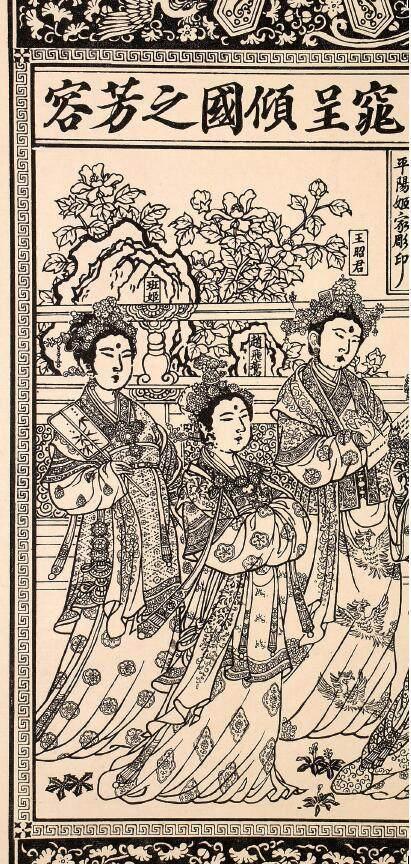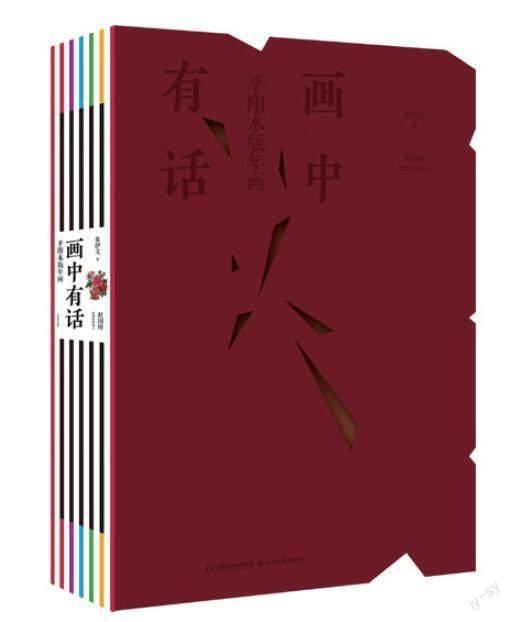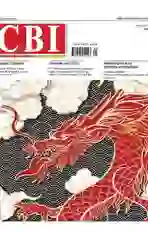Words in the Paintings: Living Well
2024-04-26



This book serves as a stage for historical background, structured around the crafting process of Pingyang woodblock New Year paintings. Through material selection, sketching, carving, coloring, and printing, it vividly interprets the splendor and vicissitudes experienced by Pingyang woodblock New Year paintings throughout history. Ultimately, it depicts how they found renewed life, carrying the essence and soul of the nation.
Zhu Yiwen
Zhu Yiwen is an associate researcher at the Shanxi Academy of Social Sciences (Development Research Center of Shanxi Provincial Peoples Government), head of Zhu Yiwen Studio, and a member of the China Writers Association.
Zhao Guoqi
Zhao Guoqi is the national representative inheritor of Pingyang Woodblock New Year Paintings. Zhao Guoqi, born into a family renowned for woodblock painting and printing, developed a passion for the craftsmanship of New Year paintings and folk art from a young age. Engaged in woodblock New Year painting for 30 years, he innovatively created the “Thirteen-Print Reprinting” technique.
Intangible cultural heritage is an integral part of the splendid traditional Chinese culture, the most vibrant chapter in cultural diversity, and the crystallization of human civilization and invaluable spiritual wealth, embodying human wisdom and the civilization and glory of human history. In November 1989, UNESCOs 25th General Conference adopted the Recommendation on the Safeguarding of Traditional Culture and Folklore, urging member states to take prompt action to protect traditional and folk cultures. In November 1997, UNESCO passed a resolution to establish the “Representative List of the Intangible Cultural Heritage of Humanity,” and in November 1998, it adopted the Regulations on the Proclamation of Masterpieces of the Oral and Intangible Heritage of Humanity.
The selection of “Masterpieces of the Oral and Intangible Heritage of Humanity” began in 2001, with three batches selected in 2001, 2003, and 2005, including Chinas Kunqu opera and Guqin art in the 2001 and 2003 selections. On October 17, 2003, UNESCOs 32nd General Conference adopted the Convention for the Safeguarding of the Intangible Cultural Heritage, marking a historic milestone in the protection of intangible cultural heritage. On August 28, 2004, the Standing Committee of the 10th National Peoples Congress of China ratified the UNESCO Convention for the Safeguarding of the Intangible Cultural Heritage, signifying a momentous step forward in Chinas efforts to protect intangible cultural heritage. As of December 2022, UNESCOs Intangible Cultural Heritage List included 677 heritage items from 140 countries. Among them, China has 43 items listed, the highest number in the world.
When I first saw the earliest extant works (replicas) of the national intangible cultural heritage, Pingyang Woodblock New Year Paintings, at the Linfen Pingyang Woodblock New Year Painting Museum -- Sui Dynastys Graceful Beauty Portraying the Nations Splendor (also known as Four Beauties) and The Brave King Wu of Wei (also known as Guan Gong) -- the phrase “Stories in the Paintings” immediately came to mind. Though monochrome and simply outlined, these two paintings still shine brilliantly and radiate unique charm under the dim museum lights. They are not just clay figurines but actively communicate with viewers, attempting to convey stories and meanings. Four Beauties represents the lost civilization of the Western Xia, the aesthetics of the Song and Jin periods, and the historical affection of the people for beauty and their aspiration for a good life. Guan Gong symbolizes the tragic upheaval of civilization, the spirited vigor of the Chinese nation, and the eternal admiration and remembrance of heroes. Other colorful Pingyang Woodblock New Year Paintings depict folk customs, religious rituals, opera scenes, and real-life experiences. Myths and legends, historical stories, opera characters, Buddhism, Confucianism, Taoism, and other themes are all included, “skillfully painting the four classes of society, wonderfully depicting the gods of wealth and bodhisattvas,” and “collecting all the major events of the world, depicting what is heard in the streets and alleys,” and also “do not distinguish the south and north styles, but paintings of ancient and modern anecdotes.” Full of the rustic flavor of mountain villages on the Loess Plateau, it reflects the folk production and life, life etiquette and seasonal activities of many aspects, which is a true record of the activities of the people in the hometown of Tang Yao, and a very precious historical material for studying the Chinese civilization.
Later, “Stories in the Paintings” was chosen as the title of this book. These four words, as if they are floating, roaming, and waiting in the Pingyang Woodblock New Year Paintings Museum, let everyone who encounters them, to feel, to immerse, to refine, to write down, to speak out, to do everything they can. Thus, the core message conveyed by the Pingyang Woodblock New Year Paintings, in summary, resonates with the familiar refrain often spoken by our grandparents and parents: “Live well.” This saying represents their hopes and is the secret to the enduring legacy of the Chinese nation.
But what does it mean to live well? How can one lead a good life? The answer lies in the rich traditional Chinese culture, which has long provided guidance.
Living well means moving in harmony with the seasons, achieving unity between humanity and nature. It means adhering to the sentiments of the people and following established customs. A good life also involves having reverence, seeking auspiciousness, and avoiding misfortune. Furthermore, it calls for a pursuit of the spirit, integrating education and enjoyment. Its about finding beauty and auspicious meanings in everything, like “searching for moonlight among scattered sixpences.”
Who has ensured the transmission of these woodblock prints from generation to generation, making them as informative as history books and as detailed as almanacs? Its the inheritor of Pingyang Woodblock New Year Paintings.
And who has perpetuated traditional cultures like these, shaping our shared spiritual homeland? Its the inheritor of various intangible cultural heritages.
Amidst the worlds noise, these inheritors of intangible cultural heritage forsake grandeur, embrace solitude, and with devout hearts, pass down these national treasures generation after generation. This spirit of enduring all hardships to preserve and promote intangible cultural heritage permeates the lives of many inheritors. Many peoples major events in their lives are closely related to their skills, so when we write about the intangible cultural heritage, we cant just write about how the heritage itself is made, how it is spread, and how it is inherited, but write about the stories behind the generations of heritage inheritors. These stories are life itself.
These stories include the transparent glass art of Taiyuans Su family, symbolizing deep loyalty and profound friendship. The shadow puppets of Xiaoyi, which gained international acclaim and a new lease on life. The joinery of Xiangfens Jin-style furniture embodies life philosophies in its tenon-and-mortise construction. The art of paper-cutting in Zhongyang, where behind the sublime craftsmanship lie human struggles and tears. Moreover, various products incorporating intangible cultural heritage techniques are breaking new ground in the modern era, creating waves of revitalization and legend through social media.
Each of these stories could be a grand narrative of national sentiment and heritage.
Just like the generations of inheritors of Pingyang Woodblock New Year Paintings, from the Qing Dynastys Qianlong era to the Republic of China and to the present, they have weathered great upheavals and changes, yet stand firm. In a way, perhaps its their inner peace that allows them to live comfortably, do what they love, and create masterpiece after masterpiece. Thus, the New Year paintings they create convey not only the wisdom of our ancestors but also their thoughts and attitudes toward living well.
May each of us, be able to understand the words in the painting, and understand the soul of the excellent traditional Chinese culture, in the steaming porridge and rice, in the lanterns and decorations of the New Year and festivals, in the freehand brushwork of the painting and calligraphy, in the natural conditions and circumstances of the twenty-four solar terms, to act according to the situation, to treat ourselves well, to live well, to strive for self-improvement, to earnestly live a good life every day.
We owe our gratitude to inheritors like Zhao Guoqi. Their dedication enables our cultural continuity.
Every Picture Tells a Story: Pingyang Woodblock Printing
Zhu Yiwen, Zhao Guoqi
Shanxi Economy Press
September 2023
298.00 (CNY)
